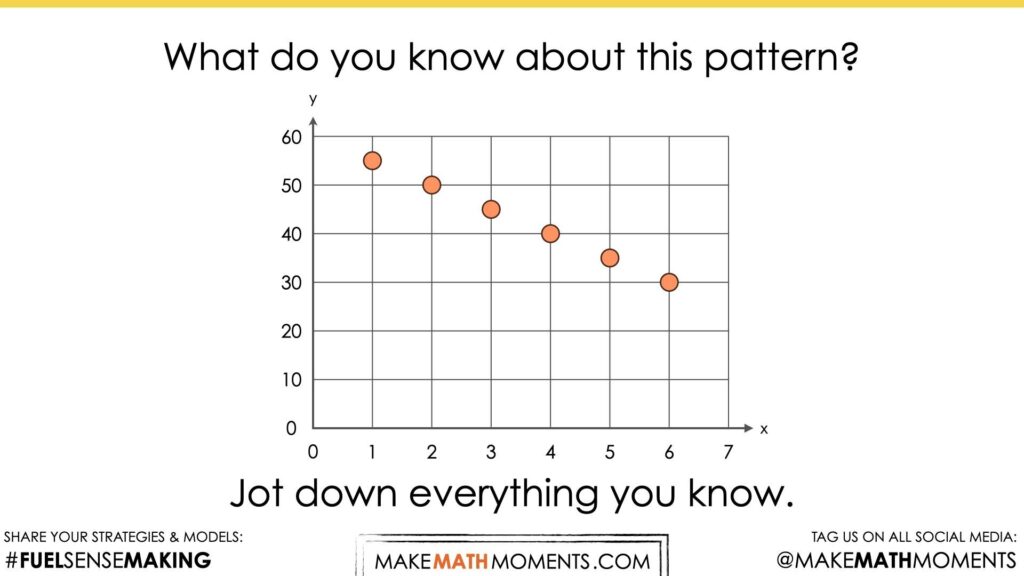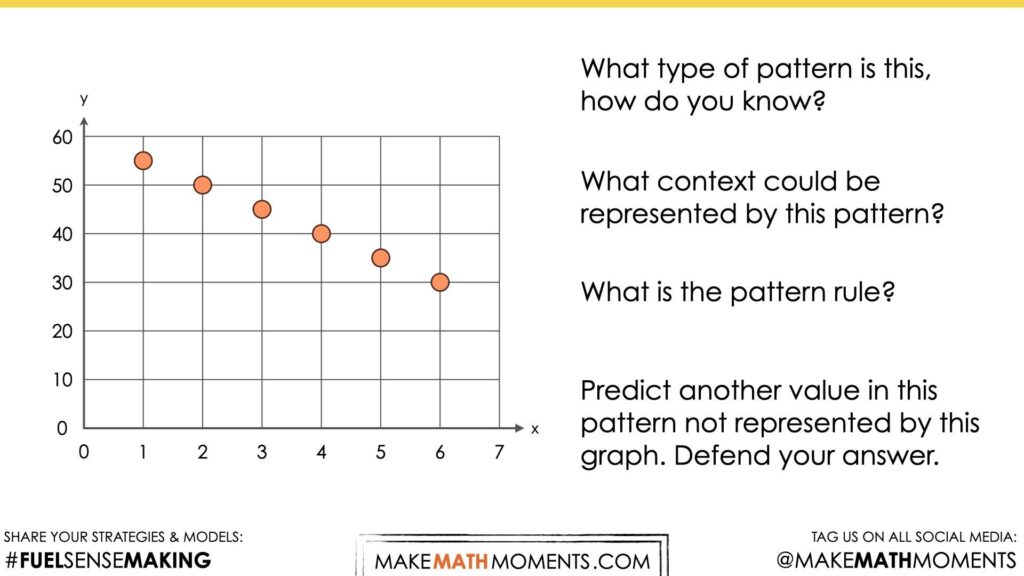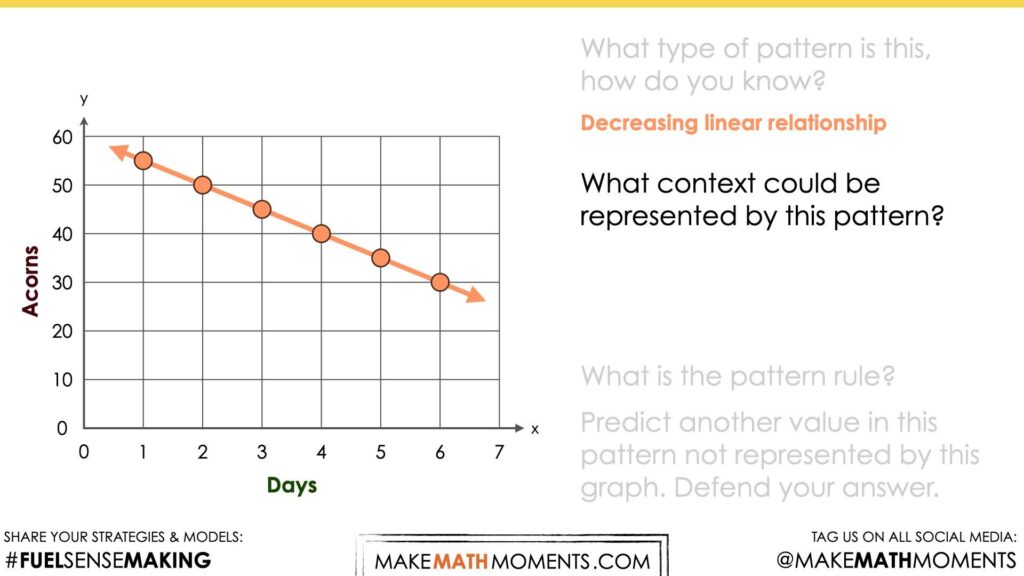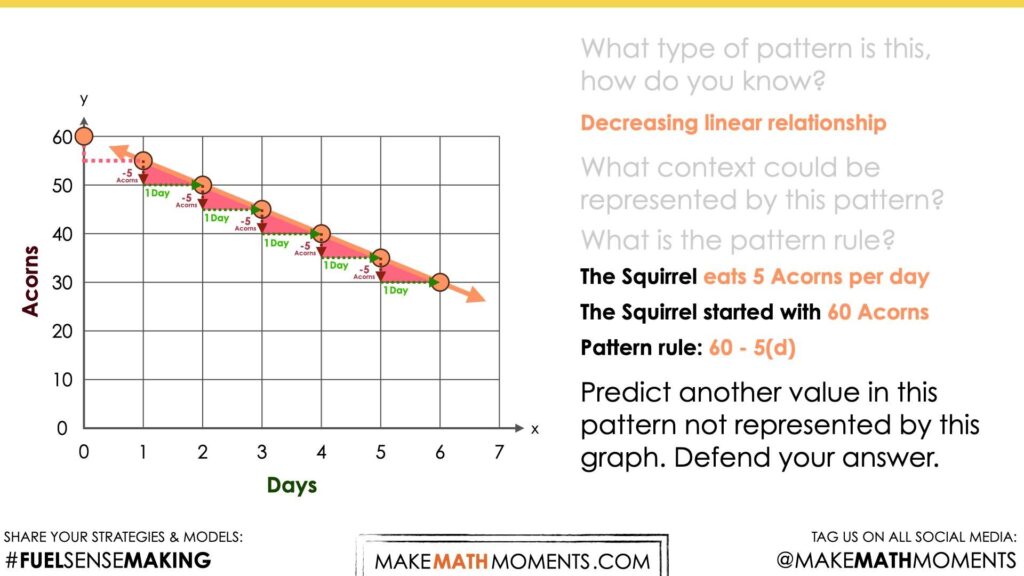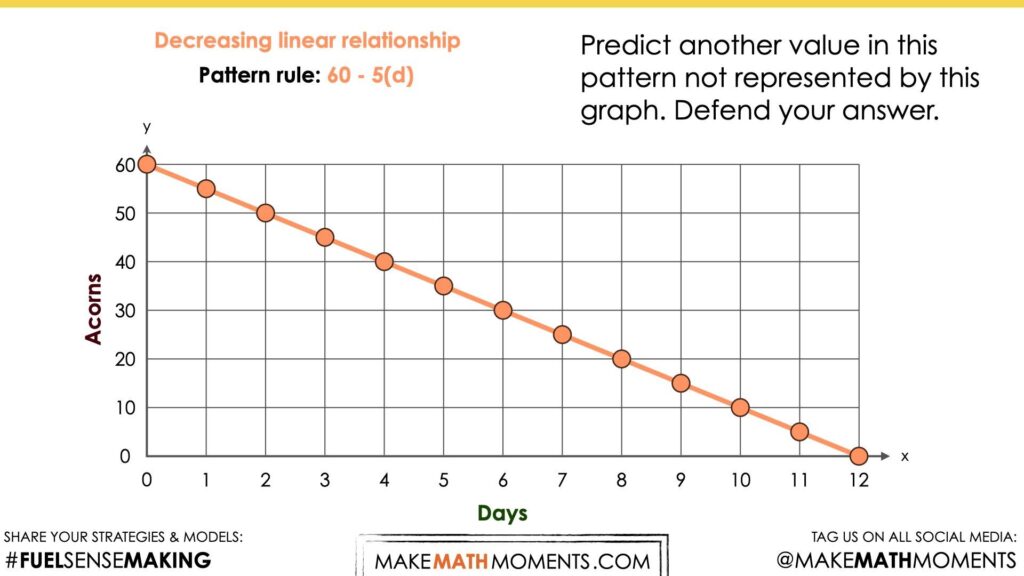ACORN HOARDING [DAY 4]
GROWING & SHRINKING LINEAR PATTERNS
Explore growing & shrinking visual patterns and linear relationships by constructing pattern rules in words, tables of values and equations.
Intentionality
Math Talk
Visual Math Talk Prompt #1
Visual Math Talk Prompt #2
Visual Math Talk Prompt #3
Purposeful Practice
Resources & Downloads
Educator Discussion Area
Intentionality & Unit Overview
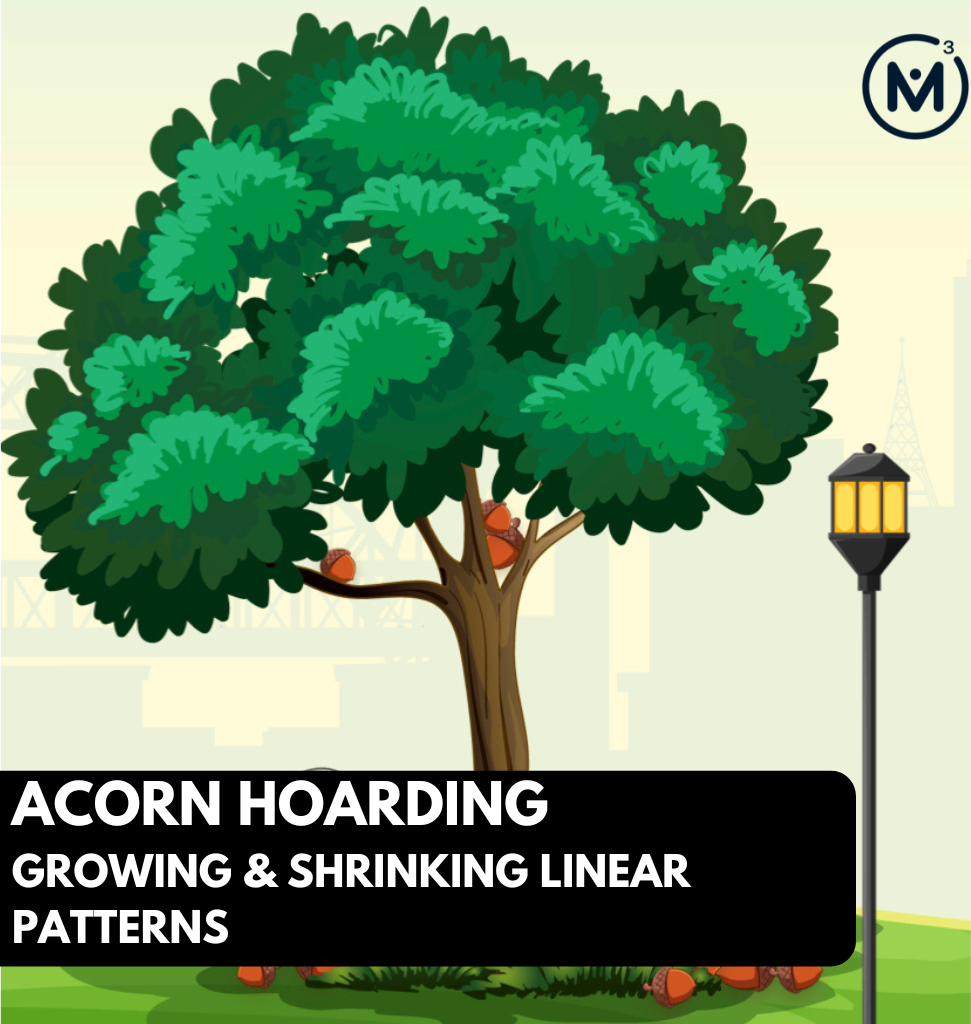
Length of Unit: 5 Days
Access each lesson from this unit using the navigation links below
Students will extend shrinking linear patterns. Examine graphical representations of patterns. They will make near and far predictions and describe the pattern in words.
Intentionality…
The purpose of the Day 4 activities is to reinforce key concepts from Day 3. Students will engage in a math talk using graphical representations of shrinking patterns and will have an opportunity to complete independent purposeful practice. The math talk and purposeful practice serve to develop a deeper understanding of the following big ideas.
- Patterns can be extended because they are repetitive by nature.
- Pattern rules are generalizations about a pattern, and they can be described in words.
- A pattern can be extended to make a prediction.
- For far predictions, calculations are required for efficiency.
- In a shrinking pattern, the values increase.
- In a linear pattern, the values increase/decrease at the same rate.
- Graphical representations of linear growing and shrinking patterns appear as straight lines.
Math Talk
Login/Join to access the entire Teacher Guide, downloadable slide decks and printable handouts for this lesson and all problem based units.
Visual Math Talk Prompt #1
Begin playing the following visual number talk prompt video and be ready to pause the video to allow for think time.
After the graph is displayed for students, pause the video and ask students:
What do you know about this pattern?
Jot down everything you know.
Give students an opportunity to turn and talk as well as share out to the group before presenting them with these questions:
What type of pattern is this, how do you know?
What context could be represented by this pattern?
What is the pattern rule?
Predict another value in this pattern not represented by this graph. Defend your answer.
Students may have already shared that this graph was a decreasing linear relationship previously, however it might be helpful to ensure that all students recognize this and understand why that is true.
Students may have also shared different contexts that could be represented by this relationship. Be intentional about ensuring students know that many contexts could work for this relationship and the one we will share here is not the right context, but rather just one of many possibilities that could work.
When students share the pattern rule, be mindful to listen for students referencing characteristics of this particular decreasing linear relationship. Are students referencing the initial value or rate of change without necessarily realizing it? Be sure to highlight or help them emerge these ideas based on what they share from the graph.
Although some students may use the language of something like:
“It goes down by 3 every time.”
Be sure to explicitly share how we might see this relationship in the graph. For example, noting that after 4 days, the number of acorns decreased by 20 acorns is an equivalent ratio to after 2 days, the number of acorns decreased by 10 acorns.
-20 acorns to 4 days
-10 acorns to 2 days
-5 acorns to 1 day
These equivalent ratios can be used to reveal a rate through partitive division. In this case, the rate would be -5 acorns per day.
By extending the pattern backwards to day 0, we can reveal the initial value (y-intercept) and highlight a pattern rule of:
Starts with 60 acorns, removing 5 acorns each day
Or, as algebraic expressions such as:
60 – 5d
-5d + 60
-5x + 60
Or, algebraic equations such as:
N = 60 – 5d
N = -5d + 60
y = -5x + 60
Visual Math Talk Prompt #2
Login/Join to access the entire Teacher Guide, downloadable slide decks and printable handouts for this lesson and all problem based units.
Visual Math Talk Prompt #3
Login/Join to access the entire Teacher Guide, downloadable slide decks and printable handouts for this lesson and all problem based units.
Purposeful Practice
While Students Are Practicing…
Login/Join to access the Purposeful Practice as well as the Teacher Guide, downloadable slide decks and printable handouts for this lesson and all problem based units.
Questions: Growing Linear Patterns
Question #1:
Login/Join to access the full teacher guides, downloadable slide decks and printable handouts for this lesson and all problem based units.
Question #2:
Login/Join to access the full teacher guides, downloadable slide decks and printable handouts for this lesson and all problem based units.
Question #3:
Login/Join to access the full teacher guides, downloadable slide decks and printable handouts for this lesson and all problem based units.
Question #4:
Login/Join to access the full teacher guides, downloadable slide decks and printable handouts for this lesson and all problem based units.
Question #5:
Login/Join to access the full teacher guides, downloadable slide decks and printable handouts for this lesson and all problem based units.
Question #6:
Login/Join to access the full teacher guides, downloadable slide decks and printable handouts for this lesson and all problem based units.
Resources & Downloads
Login/Join to access the entire Teacher Guide, downloadable slide decks and printable handouts for this lesson and all problem based units.
Educator Discussion Area
Login/Join to access the entire Teacher Guide, downloadable slide decks and printable handouts for this lesson and all problem based units.
Explore Our 60+ Problem Based Units
This Make Math Moments Lesson was designed to spark curiosity for a multi-day unit of study with built in purposeful practice, number talks and extensions to elicit and emerge strategies and mathematical models.
Dig into our other units of study and view by concept continuum, grade or topic!

 The Concept Holding Your Students Back - Online Course
The Concept Holding Your Students Back - Online Course 
